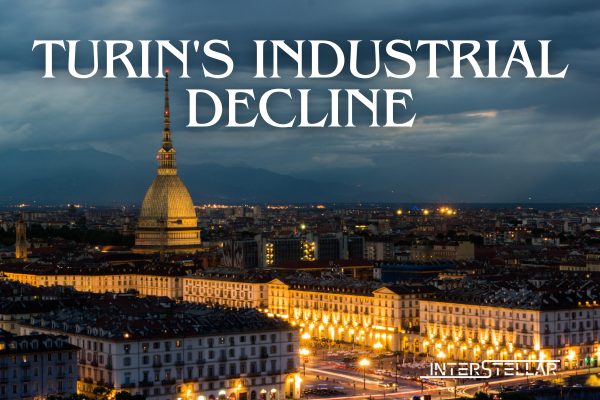Turin’s Auto Industry Decline Mirrors Europe’s Struggles with Electrification
The Italian city of Turin, once the heart of Europe’s automotive industry, is now emblematic of the industrial decline facing many parts of the continent. The city’s historic Mirafiori plant, part of Fiat’s legacy, highlights the challenges European automakers face as they struggle with electrification costs, lower demand, and increasing competition from China.
The Decline of Turin Auto Industry
Located at the base of the Alps in north-west Italy, Turin is where Fiat was founded 125 years ago by the Agnelli family. Fiat, now part of multinational Stellantis, was once a dominant force in the automotive industry. However, the decline of the sector is now painfully clear, with the Mirafiori plant symbolising this downturn.
The factory, which produces the Fiat 500 electric city car and two Maserati models, has seen production halted for much of the year due to low demand. About 2,800 workers have been furloughed, receiving reduced pay. Giacomo Zulianello, a plant worker, captures the bleak mood: “Mirafiori has already been closed. It’s just that it reopens sometimes.”
The Legacy of Fiat and Turin’s Shrinking Industry
Over the last four decades, Turin’s auto industry has lost four of its car plants. The famous Lingotto plant, known for its rooftop test track, was the first to close in 1982. The most recent closure came last year with the shuttering of the Grugliasco plant. Once employing 60,000 people and producing up to one million cars a year during its peak in the 1960s, Mirafiori now operates at a fraction of its former capacity.
Fiat’s identity has also changed significantly. After merging with Chrysler in 2014 to form Fiat Chrysler Automobiles (FCA), the company joined forces with Peugeot maker PSA in 2021, creating Stellantis. While Fiat’s Italian roots have become diluted, the city of Turin has been left to grapple with the consequences.
Facing the Future Amid Challenges
Despite efforts to reinvent itself, Turin’s economy still heavily relies on the automotive sector. Approximately 50,000 to 60,000 jobs in the area are tied to the car industry, and the mood remains grim. Stellantis’ Italian car production is expected to drop to its lowest level since 1958, with fewer than 500,000 vehicles projected to be made this year.
Stellantis argues that Mirafiori has a future, pointing to ongoing projects like electric vehicle gearbox production, a car parts recycling centre, and a battery technology lab. A new hybrid version of the Fiat 500 is expected to begin production in 2025. However, younger generations are increasingly disinterested in the sector, and many workers, like Davide Manago, fear a return to the tough financial situations they’ve experienced during layoffs.
Turin’s once-mighty automotive sector is struggling, and its future may now depend on whether Italy can attract other automakers to the region. Talks are underway with Chinese automakers Dongfeng and Chery, but for many, hope lies beyond Turin, perhaps even outside Italy itself.





